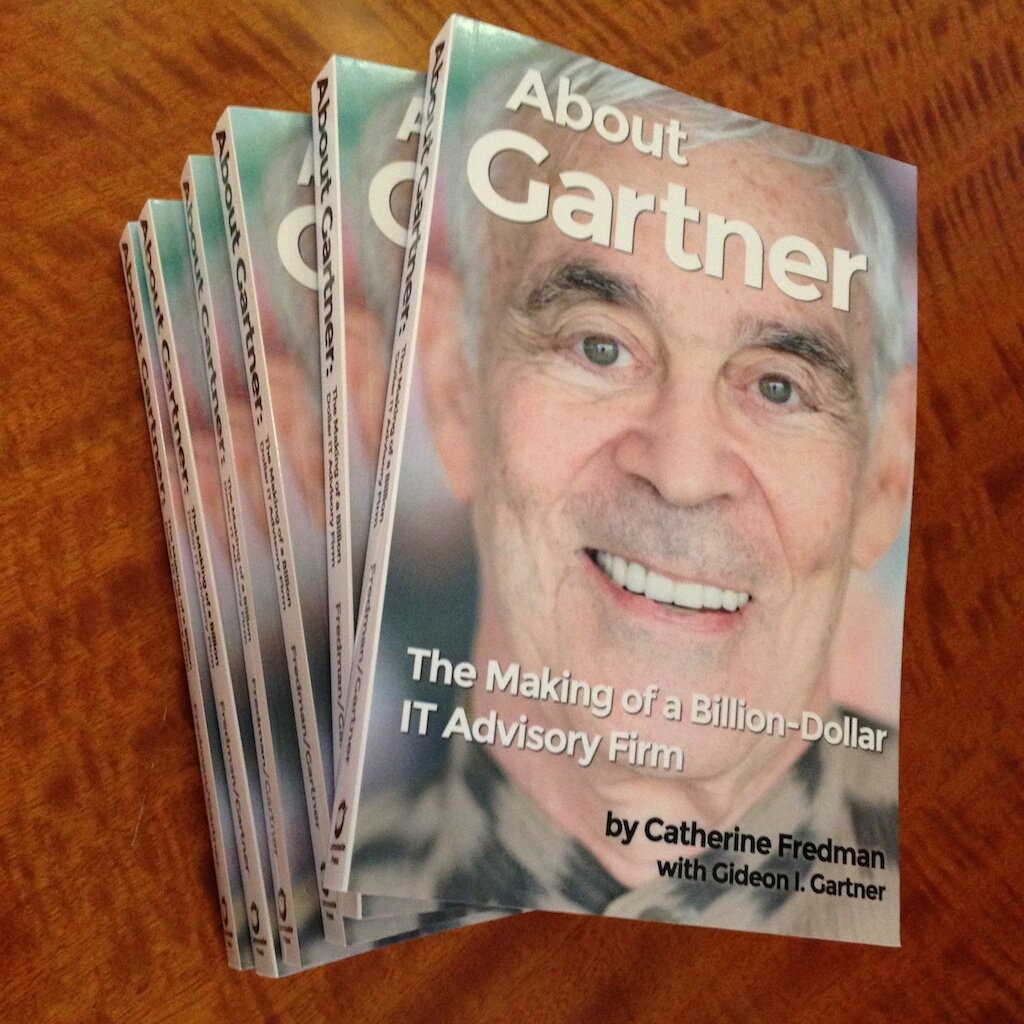When Neill Brownstein of Bessemer Venture Partners asked me, ”so Gideon, what are you up to?” (leading to the founding of Gartner), my first step was to document my view of what I believed to be the sorry status quo of the then-Advisory Industry (Yankee Group, Dataquest, IDC, et al). But true to form, I was almost always questioning the status quo. Even today in retirement, my questioning the status quo either gets me in trouble, or results in new approaches, frequently (but not always) for the better.
Once one questions the status quo, an aspiring entrepreneur should instinctively move to outline ways in which change might be effected. I once called my attitude “constructive cynicism”, part of an ethos which included an ability to smoke out opportunity and to take chances. Is such cynicism possibly a precondition for entrepreneurism?
 One recent example: being a classical music buff, and because I was frustrated by the universally terrible (in my opinion) “program notes” passed out at classical music concerts, I developed and rigorously documented a new content strategy and format for these universally used pamphlets. I first presented my redesign to the CEO of the Aspen Music Festival, where I was on the board and on the Marketing Committee, but nothing happened despite the enthusiastic responses of other board members. These classical music lovers offered some constructive ideas, but no negatives despite this being an outspoken bunch!
One recent example: being a classical music buff, and because I was frustrated by the universally terrible (in my opinion) “program notes” passed out at classical music concerts, I developed and rigorously documented a new content strategy and format for these universally used pamphlets. I first presented my redesign to the CEO of the Aspen Music Festival, where I was on the board and on the Marketing Committee, but nothing happened despite the enthusiastic responses of other board members. These classical music lovers offered some constructive ideas, but no negatives despite this being an outspoken bunch!
Here are the comments verbatim:
- I strongly support the modular approach and can see the benefit of naming the sections very clearly so that the reader can easily select and navigate. Ultimately, I believe the drafting of truly accessible program notes should be in the hands of proven music educators who know how to talk with the audience in a clear and meaningful way. Robert Winter and Robert Greenberg come to mind.
- We loved what you are proposing as program notes. I thought them brilliant and gave me (who doesn’t know as much about music as you) a further insight into the concert.
- I think that your ideas are great and that the format you describe is so innovative. It would be a wonderful project for the Music School to undertake.
- You did a brilliant job of collecting and categorizing information on the Britten “Requiem.” For a generation accustomed to surfing the Internet, it certainly seems a more familiar and relaxed format and, as we all know, no one is going to read a lengthy essay in a program before or during a performance The one element that’s missing for me is the personal perspective of a passionate, intuitive, and subjective mind, which, by definition, this style of “hunting and gathering” makes impossible. All in all, though, I find it much more suitable and appealing than what we’ve had in the past. [The essay approach is not precluded by this design, if there's space; but note, there are many sources of essays about every conceivable musical element, on the web-GIG]
- Spectacular job. I’m amazed by all of your good ideas and hard work. Not only are the current notes too technical, they’re also boring. I never manage to read all the way through.
- My comments on this prototype. In the section on Britten’s major works, why not include in parentheses after the title what each piece is — opera, symphonic work, song cycle. I’m not familiar with Curlew River. I’d like to know what kind of work it is without having to go online to check.
- Thought your ideas and written examples were excellent; have forwarded them to Howard Herring, president of new world symphony, suggesting that we implement as part of our goal of educating audience and our Fellows. He hasnt seen but loved the idea. By the way, you are not a bad writer yourself!
- Thanks for your excellent work! I hope they do it!
- LOVE this prototype.
- Gosh, they should pay you for this.
i hope they don’t drop the ball on this one — it will take some work to really implement. Very exciting…
- Great job of elucidating program notes! I hope that Alan will want to go ahead and try a test in next year’s program. It’s my impression that the musicians will almost always be reluctant to try anything new, and maybe that’s why we’re talking about a “crisis” in classical music.
- I do have a few minor comments about the sample:
- Students might be ok for doing the research and layout, but a good and knowledgeable editor will be required to ensure quality and consistency.
- I question the need for the advanced analysis unless the notes are viewed as part of the student teaching. Other than students, too few of the concert goers are qualified enough to justify the space and effort. [The analysis-Musical section is meant to be “what to listen for”, and need not be “advanced”. and, my step-son did the graphics; a professional would obviously do it differently-GIG]
- If the boxes can be distinguished by color (too costly?) or border style, readers would get accustomed to search for those boxes that are of interest to them. [the sample sent to the trustees was text only, no advanced graphics!-GIG]
- I just read your program notes suggestions. Wonderful! You are Right On! I can’t believe that this concept has not been pursued by the many orchestras in the US. If there is anything I can do to encourage AMFS to adopt these suggestions, please let me know.
But I made no headway with the Aspen Music Festival CEO, or the one who followed several years later. I then presented it to the head of the music department at Bard College, which actually had the students implementing it for a couple of years (with an assigned faculty advisor), with top-notch reactions until the content became watered down through lack of appropriate supervision. I then presented it to the General Manager of Carnegie Hall who liked it and used the idea to modify the existing notes, but only somewhat and yet, whenever I bump into G.M. Clive Gillinson in Carnegie’s Patron Lounge, he thanks me.
The general responses made me happy of course, but the potential value of the ultimate design is great, being much more user-friendly than current practice, and which could even be the basis of a new business (which I’ve sketched out, in fact I would have started such a business around this concept thirty years ago, but today it’s for somebody else to manage)! I recognize that music organizations are generally cash-short especially for what they perceive as “administrative” initiatives, but many are ignoring the potential that at least some changes to conventional and tired practices would pay off, by being marketing and audience-building.
Along similar music lines, I developed a detailed plan for how the New York City Opera company should re-engineer itself to survive, after hitting a wall in 2008, by acquiring at no cost, and integrating an important opera-in-concert organization, and/or to continue pursuing (instead of dropping) its search for a new home, the features of which I described in detail (and because it would have created a New York City icon, it might have been supported by our Mayor Bloomberg himself, not to speak of other major patrons of the arts). These efforts and quite a few others have been and are developed as a hobby, not because I ever thought inertia-laden and financially stressed organizations would really adopt my ideas.







2 Comments